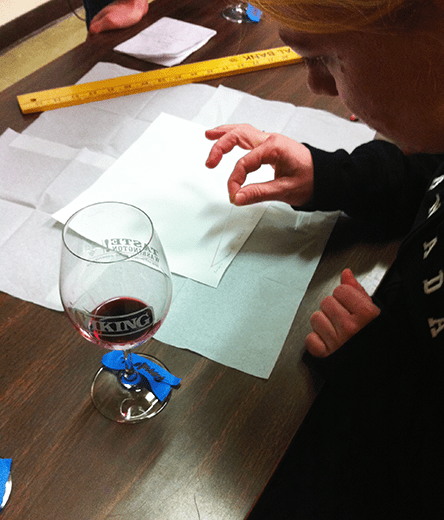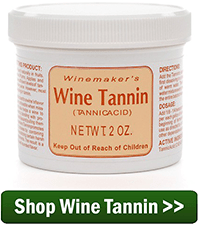 In several earlier posts, we introduced a few home winemaking terms that you may or may not be familiar with. There are many terms to learn in home winemaking, and this post, like all the previous posts, gives you a short introduction to a few of those terms to help you get started in home winemaking, or perhaps brush up on some of the terms you may not have seen in a while.
In several earlier posts, we introduced a few home winemaking terms that you may or may not be familiar with. There are many terms to learn in home winemaking, and this post, like all the previous posts, gives you a short introduction to a few of those terms to help you get started in home winemaking, or perhaps brush up on some of the terms you may not have seen in a while.
- Malolactic Fermentation: We could write a lot more on malolactic fermentation than just these few sentences, but on a very basic level, malolactic fermentation is used to convert malic acid into lactic acid, which transforms the wine from a tart, acidic wine, to a smooth, buttery finished product. In both home winemaking and professional wineries malo-lactic culture is a frequently used for a nice and slow malolactic fermentation process. Each package is enough for 6 gallons of wine, and can take anywhere from weeks to months to finish the conversion.
- Ascorbic Acid: Ascorbic acid is a commonly utilized antioxidant that is often used to prevent the grape must from oxidizing and otherwise going bad. Ascorbic acid can be used at other times during the winemaking process, including at the bottling stage. Ascorbic acid will help prevent your wine from oxidation, and will also protect against any color changes that are often associated with an oxidized wine (i.e. browning).
 Tannins: Tannins are present in both the grapes and the oak barrels, though the most influential tannins in terms of flavor and mouthfeel as those coming from the grape skins and seeds. Tannins are a chemical compound that basically add a sense of astringency to your wine, and are very helpful in the age-ability of your wine. If you want to increase the astringency of your wine, or help it to last longer unopened in your cellar, you can add wine tannin or natural grape tannin prior to bottling, in order to help achieve the desired balance you are aiming for.
Tannins: Tannins are present in both the grapes and the oak barrels, though the most influential tannins in terms of flavor and mouthfeel as those coming from the grape skins and seeds. Tannins are a chemical compound that basically add a sense of astringency to your wine, and are very helpful in the age-ability of your wine. If you want to increase the astringency of your wine, or help it to last longer unopened in your cellar, you can add wine tannin or natural grape tannin prior to bottling, in order to help achieve the desired balance you are aiming for.- Oak Extracts: If you don’t have enough cash on hand to buy an expensive oak barrel, nor do you have any place to store a large bag of oak chips, then oak extract may be the next best thing for your situation. Oak extracts come in liquid form, which in 4 ounce bottles can be easily stored and kept on your shelves. By adding a few or several tablespoons to taste (instructions come with the bottle), oak extract can easily smooth out the flavor of your wine, and imparts oak barrel flavors such as toast, vanilla, and coconut to your wine, as if you had aged your wine in an expensive oak barrel!
Here is a list of other post about home winemaking terms: Part 1 | Part 2 | Part 3 | Part 4 | Part 5 | Part 6 | Part 7 | Part 8 | Part 9 | Part 10 | Part 11 |
—————————————————————————————————————–
Ed Kraus is a 3rd generation home brewer/winemaker and has been an owner of E. C. Kraus since 1999. He has been helping individuals make better wine and beer for over 25 years.
